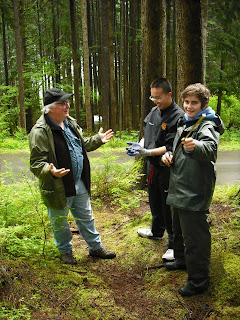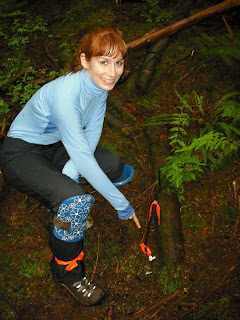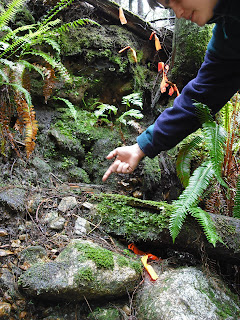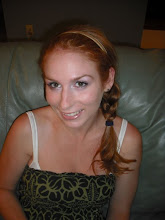
We also went over surveying techniques and how to properly fill out inventory forms so that everyone's work remains consistent. One of the topics that came up, that will be hammered out this weekend, is that there are two names floating around for ball and yoke bottle stoppers composed of metal and ceramic. We have a laminated poster from the URS Corporation Archaeology Laboratory (pictured below), and they call the stoppers either a "lightening stopper" or a "lighting stopper", so Verena will be looking into what the more uniform term is.

Bob brought up something of interest that might help explain to students why some metal wire was found on site. Often loggers would use a bottle, with wire attached to it, and hang it up in the tree they are working on (the bottle is pictured below). The bottle would have been filled with oil, and used as a lubricant while sawing.

Something that will be looked into next week, by Rikki, is the bone pieces found near the ofuro and the garden (which are next to each other). Originally it was thought that these bone fragments were used to increase the pH of the garden area, but now an alternate theory has been brought forward. Calcium deposits are made if bones burned in a fire (that is hot enough), leaving behind white, small fragments, that are very hard. The bone particles could have been evidence that the inhabitants of the logging camp were burning their food garbage under the ofuro, which would help fuel the fire under the ofuro (the japanese bathhouse), and prevent the attraction of animals to the site. Another interesting thing is that these bone pieces could be an indication of diet.
Next week the students will be finishing up the excavation, because it is the possible last week to do so. The camp will start to be broken down on Wednesday (taking down the tents, removing flagging tape, cleaning screens & other objects for storage), as well as starting to backfill the excavation units. Thursday and Friday will be held in the lab, with the possibility of students preparing for the final exam.
The final exam sounds really fun! Essentially, students must complete an archaeology site inventory form, which is a form that archaeologists produce when they find a site and register it with the provincial government. The form requires information that includes a scale drawing on a map that includes certain features, the precise access to site, the latitude and longitude, the altitude (through reading contour lines), and a description of what was found.
Bob has mentioned that students learn a lot when they work together, so his rough plan is to get the students to do a practice exam in about 3 to 4 groups, and then in the final week they will be broken into different and smaller groups again. They will go to a specific area, and pretend they are the first people to access this site. If the small groups have consistent facts and ovservations, then it is more accurate, because more things are collectively noticed. Then, on the last day, the actual exam is done individually. It sounds like a fun challenge!
Well, that was it for this week. Monday will be spent in the field! Have a great weekend.





































